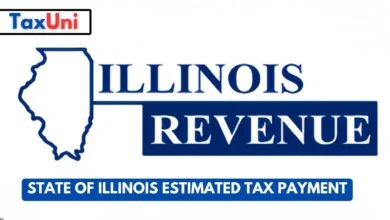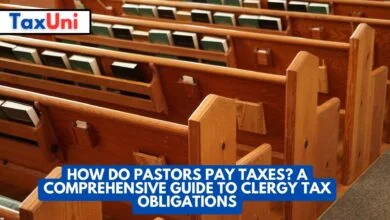U.S. Government Reliance on Income Tax Over the Last 30 Years
How much does the U.S. government really rely on income taxes to keep things running? This article explores the last 30 years of U.S. government reliance on income tax, breaking down trends, key tax policies, and shifts in federal revenue sources, all in a way that won’t make your eyes glaze over.

Contents
For the past three decades, the U.S. government’s reliance on income tax has been a defining factor in how the country funds its operations, from defense and healthcare to infrastructure and social programs. Individual and corporate income taxes have historically made up the largest share of federal revenue, but the balance has shifted over time due to tax policy changes, economic fluctuations, and shifts in government spending priorities. From the Bush-era tax cuts to the Tax Cuts and Jobs Act (TCJA), and from the 2008 financial crisis to the pandemic-driven stimulus packages, the composition of federal revenue has been anything but static. With payroll taxes, corporate taxes, and other federal levies playing a role, understanding how the government’s reliance on income tax has evolved offers insight into broader economic and fiscal trends. Whether you’re a taxpayer wondering where your money goes, a business owner concerned about future tax hikes, or just a curious observer of U.S. economic policy, this analysis will break down how income tax has shaped government funding over the last 30 years.
The Breakdown of Federal Revenue Sources
Over the past three decades, the federal government has relied on multiple revenue streams to fund its budget. Here’s how the key components break down:
- Individual Income Tax (Largest Source – 50-57%)
- Paid by working individuals and households.
- Progressive tax structure (higher earners pay a higher percentage).
- Subject to fluctuations due to tax policy changes and economic conditions.
- Payroll Taxes (Second Largest – 35-38%)
- Funds Social Security, Medicare, and unemployment insurance.
- Split between employers and employees.
- More stable than income tax due to wage-based structure.
- Corporate Income Tax (Fluctuates – 7-12%)
- Based on corporate profits.
- Significantly impacted by tax policy changes like the TCJA’s corporate rate cut.
- Other Revenue (Customs, Estate Taxes, Excise Taxes – 5-10%)
- Includes tariffs, alcohol & tobacco taxes, and fees from government services.
- Less significant in overall federal revenue but still a contributing factor.

How Has U.S. Government Reliance on Income Tax Changed Over Time?
1990s: Economic Boom and High Tax Revenue
- The Clinton administration raised taxes on higher earners, increasing individual tax revenue.
- The economy boomed, leading to higher wages and increased payroll tax collection.
- By the end of the decade, the U.S. saw a budget surplus, thanks in part to strong income tax revenue.
2000s: Tax Cuts and Financial Crisis Shake-Up
- The Bush-era tax cuts (2001 & 2003) reduced individual and corporate tax rates, decreasing government reliance on income tax.
- The 2008 financial crisis led to massive job losses, shrinking payroll tax contributions and reducing tax revenue overall.
- The government increased reliance on deficit spending to manage the crisis.
2010s: Recovery, TCJA, and Changing Tax Policies
- Under Obama’s administration, tax rates on high earners increased to help fund healthcare and social programs.
- The Tax Cuts and Jobs Act (2017) under Trump slashed corporate tax rates from 35% to 21%, shifting some revenue burden to individual taxpayers.
- The U.S. economy rebounded post-recession, increasing income tax contributions again.
2020s: Pandemic Spending and the Future of Taxation
- COVID-19 relief packages led to trillions in government spending, driving up the federal deficit.
- Temporary tax breaks and stimulus checks altered tax collection trends.
- Debates over TCJA extensions and potential tax hikes will determine the future balance of income tax reliance.

The Debate: Should the U.S. Government Reduce Reliance on Income Tax?
Some economists argue that the U.S. relies too heavily on income tax, suggesting alternatives like:
✅ Expanding consumption taxes (like a national sales tax or VAT)
✅ Broadening corporate tax loopholes to increase revenue
✅ Revising payroll tax caps to strengthen Social Security funding
However, others warn that reducing income tax reliance could:
❌ Put more burden on lower-income households if consumption taxes replace income tax.
❌ Lead to increased budget deficits if revenue doesn’t keep pace with spending.
❌ Hurt economic growth if corporate taxes become too high.
So What’s Next for U.S. Tax Policy?
The U.S. government’s reliance on income tax will continue to evolve as new policies emerge and economic conditions shift. Whether tax rates increase, decrease, or shift toward alternative revenue sources, taxpayers and businesses alike must stay informed to navigate the future of taxation. With upcoming debates over TCJA extensions, corporate tax hikes, and deficit reduction, the next decade will play a critical role in shaping how the government funds itself.

FAQs
Q: What percentage of U.S. government revenue comes from income tax?
A: Individual income tax makes up around 50-57% of federal revenue, depending on economic conditions and tax policy changes.
Q: Has the U.S. always relied this much on income tax?
A: No. Over time, reliance has fluctuated due to tax cuts, economic downturns, and shifts in payroll tax contributions.
Q: How did the Tax Cuts and Jobs Act (TCJA) affect income tax revenue?
A: The TCJA lowered corporate tax rates, shifting more of the revenue burden onto individual income tax.
Q: Could the U.S. government move away from income tax reliance?
A: Some economists propose higher consumption taxes or broader corporate taxation, but income tax remains the primary revenue source.





